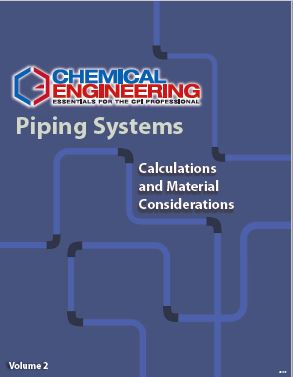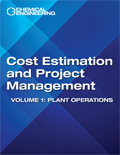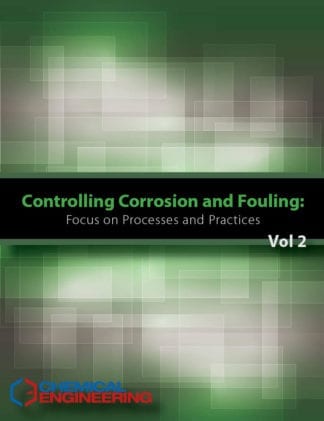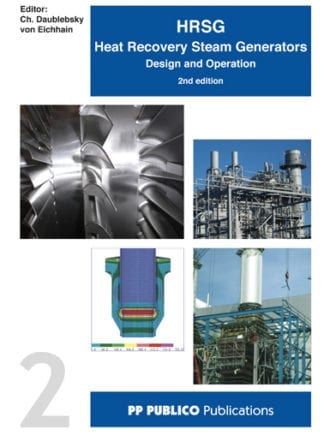Description
Volume 2 of this 2-part guidebook contains practical, how-to engineering articles formerly published in Chemical Engineering, plus practical engineering tip sheets. These articles provide practical engineering guidance on many aspects of piping design, installation, operation and maintenance.
Practical guidance is provided on relevant calculations related to compressible fluids, isothermal flow, pipe-flow friction factors and other aspects of fluid dynamics. Other focus is on materials of construction, ranging from steel to polymers. Engineering guidance is provided for safely operating and maintaining piping systems at extremely low temperatures, pigging pipeline systems and designing chemical-injection systems to interface with pipelines. As a bonus, receive guidance on project management and cost estimating.
Delivered in a PDF format. 169 pages.
ARTICLES INCLUDE:
Extremely Low-Temperature Systems
• Understanding the nuances of low-temperature engineering is key to safe and efficient operations
New Measurement Practices for Cold Climates
• Selecting the right pressure, temperature, flow and level meters and connection systems can help to eliminate the need for heated enclosures and sensing lines
Chemical Resistance of Thermoplastics
Fluid Flow
Overcoming Corrosive Processes with High- Alloyed
Stainless Steels
• Advanced high-alloyed stainless steels with austenitic properties can address corrosion concerns in challenging phosphoric and nitric acid processes
CPI Machinery: Commissioning, Startup and Piping
• Practical notes on installation, piping, support, layout, nozzle-loads, stress analysis, pre-commissioning, commissioning, startup and operation of rotating machinery
Managing Pressure while Pigging an Oil Pipeline
• Pressure control valves can manage pressure in oil pipelines, but pigging the line presents a challenge
Plant Revamps and Turnarounds: Some Lessons Learned
• Although time is always precious, taking shortcuts and skipping standard procedures can be costly
Improve Your Contingency Estimates for More Realistic Project Budgets
• Reliable risk-analysis and contingency-estimation practices help to better manage costs in CPI projects of all sizes
Chemical Process Plants: Plan for Revamps
• Follow this guidance to make the most of engineering upgrades that are designed to improve plant operations or boost throughput capacity
Design Underground Piping for Safety
• Buried systems bear a number of unique risks and require special considerations, including those related to soil characteristics and seismic loads
Inspecting Underground Piping
• First consider noninvasive methods to determine where excavation is — and isn’t — necessary
Quick Pipe and Duct Flow Calculations
• Simple calculation methods for estimating flow characteristics in pipes and ducts save engineers’ time
Compressible Fluid Flow Calculation Methods
• A generalized comparison of three pressure-drop calculation methods is developed, guiding engineers in making the proper assumptions when evaluating compressible fluid flow
Dimensionless numbers in fluid dynamics
Managing Small and Medium-sized Capital Projects
• A real-life example is provided to show how to stay on program and within budget
Seven Tools for Project Success
• Having the right tools is essential for success. These tools are of use to both novice and experienced project managers
Internal Corrosion Sampling
• Proper sampling and handling procedures are critical for supporting corrosion-management decision making
Project Optimization Through Engineering
• Follow these practical recommendations to reduce capital outlay and operating costs, deliver shorter schedules and improve design quality
A Novel Equation for Isothermal Pipe Flow
• A newly derived equation for isothermal gas flow in pipes yields improved mass flux predictions
Materials Selection in The CPI
• An overview of the many factors to be considered when selecting materials of construction
Implementing a Corrosion-Under-Insulation Program
• CPI facilities need to put in place a systematic program for preventing and mitigating corrosion under insulation
Steel Corrosion
Materials Management — Evolving the Process for an Evolving Marketplace
• The case examples presented here show that proper planning, communication and execution of tasks can add value and reduce unintended negative consequences for many capitalintensive projects
Pressure-Relief System Design: Developments and Deficiencies
• Areas of recent activity for pressure-relief systems include new calculation methods and updates to existing codes and standards. Included here is an overview of recent developments and a look at the results from a recent study of pressure-relief system deficiencies and solutions
Determining Friction Factors in Turbulent Pipe Flow
• Several approaches are reviewed for calculating fluid-flow friction factors in fluid mechanics problems using the Colebrook equation
Simplifying the Use of Pipe-flow Friction-Factors
• The Lambert W function can help determine accurate values for fluid friction factors and eliminate the need for iterative approaches
Piping: Minimizing the Risk of ‘Pre-buys’
• Buying too early may risk a surplus; buying too late may impact the schedule and budget
Designing Chemical- Injection Systems
• Follow these guidelines to properly introduce various additives into process streams
Sampling for Internal Corrosion
Pressure Transmitter Basics: Selection Guidelines
• Climbing the decision tree to pick the right pressure sensor
A Universal Equation for Designing Pipelines
• The pipe-flow equation presented here can be used to properly and easily size pipelines for liquid, vapor and two phase flow. Example calculations are also shown
CPVC Piping In Chemical Environments: Evaluating the Safety Record
• No torches, fewer burn hazards and outstanding fire characteristics make CPVC a safe, effective alternative for industrial piping
Polymer-Based Piping Systems in the CPI
• If properly used, polymeric piping and components can be cost-effective alternatives to those made of traditional materials
Specifying Elastomer Seals for Plastic Piping
• Careful attention to elastomer properties and variation by manufacturer can help optimize specification




